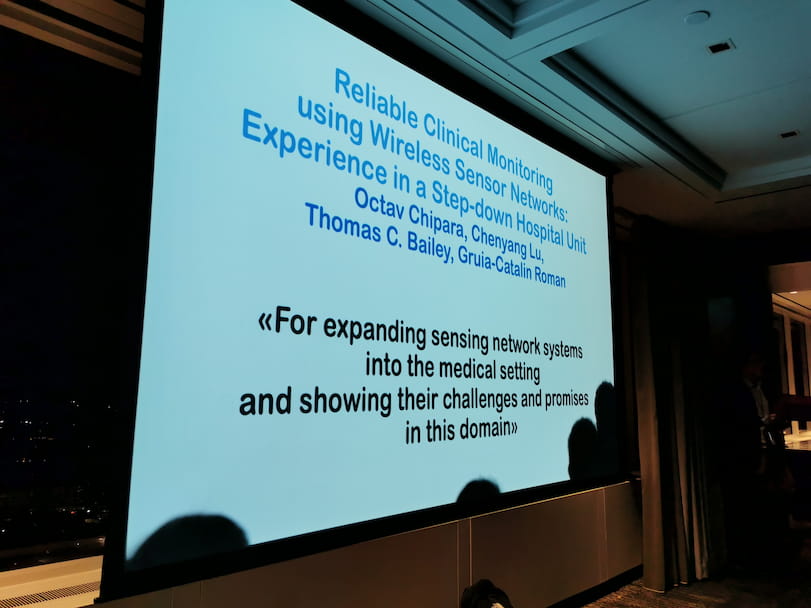Lu paper wins ‘test of time’ award
The award, for his paper on using wireless sensor networks in a hospital environment, is the second such award he has received in 2022

For the second time this year, Chenyang Lu, an internationally recognized leader in cyber-physical systems, has received recognition for a trailblazing paper that has been influential in the field for more than a decade.
Lu, the Fullgraf Professor in the McKelvey School of Engineering at Washington University in St. Louis, has received the Test of Time Award from ACM Conference on Embedded Networked Sensor Systems (SenSys), the flagship conference on the Internet of Things (IoT). This award recognizes papers that are at least 10 years old and have had a longstanding impact on the field.
The paper, titled “Reliable clinical monitoring using wireless sensor networks: experience in a step-down hospital unit,” was presented at SenSys in November 2010. Co-authors were Octav Chipara, who earned a doctorate in computer science from the engineering school in 2010 and is now an associate professor at the University of Iowa; Thomas Bailey, MD, professor of medicine at the School of Medicine; and Gruia-Catalin Roman, former professor and chair of the Department of Computer Science & Engineering, now a professor at the University of New Mexico.
The paper presents the design, rollout and clinical trial of a wireless clinical monitoring system that collects pulse and oxygen saturation readings from patients in general hospital units at Barnes-Jewish Hospital in St. Louis. While general hospital units usually rely on nurses to manually measure the vital signs of patients once every few hours, the wireless system collected and streamed the data every minute over a wireless sensor network. In use over seven months with 41 patients in a step-down cardiology unit, the network achieved 95% to 100% reliability. Their results indicate the feasibility and promise of using wireless sensor networks for continuous patient monitoring and clinical deterioration detection in general hospital units. They also observed frequent sensing failures of wearable sensors and explored ways to overcome the challenge.
“This paper is special to me in that it was my first foray into medicine, “Lu said. “Our work was among the first to explore and deploy wireless sensor networks and wearable sensors in a hospital environment.”

Since then, Lu has collaborated with School of Medicine faculty on several projects involving patient monitoring with wearable sensors, including using wearable fitness trackers to predict hospital readmissions of heart failure patients, postoperative complications of patients undergoing pancreatic surgery, and depression remission of patients under behavioral therapy.
“As we originally found in the SenSys paper in 2010, wearable data collected in the real-world are noisy and incomplete.” Lu said. “Over the past decade, researchers in the burgeoning field of Internet of Medical Things (IoMT) have developed new ways to handle wearable data – the answer lies in machine learning techniques capable of extracting reliable information from longitudinal but imperfect wearable data. The combination of wearables and machine learning provides powerful tools to improve healthcare.”
In May 2022, Lu received the 2021 IEEE Real-Time and Embedded Technology and Applications Symposium (RTAS) Influential Paper Award for a groundbreaking paper on real-time wireless sensor networks that has nearly 800 citations. The paper was recognized for its pioneering role in addressing real-time communication issues in wireless sensor networks. The paper, titled “RAP: A real-time communication architecture for large-scale wireless sensor networks,” was presented at the Proceedings of the 8th IEEE Real-Time Technology and Applications Symposium (RTAS), San Jose, California, in September 2002, when wireless sensor networks were in the early stages of development.



